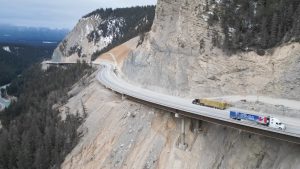ARLINGTON, VA. — U.S. construction spending reached a record level of $1.3 trillion in May as monthly increases in residential and public investment outweighed a decline in private nonresidential outlays, according to an analysis of new government data by the Associated General Contractors of America.
Construction spending in May increased 0.4 per cent from the rate in April and 4.5 per cent from the May 2017 rate to $1.309 trillion at a seasonally adjusted annual rate, noted a July 2 media statement. For the month, public construction spending rose 0.7 per cent, private residential spending increased 0.8 per cent and private nonresidential construction spending slipped 0.3 per cent.
On a year-over-year basis, public construction spending climbed 4.7 per cent, private residential spending grew 6.6 per cent and private nonresidential construction spending edged up 1.8 per cent.
Among public infrastructure spending categories, highway and street construction increased 5.8 per cent from May 2017 to May 2018; transportation construction (airports, transit, public rail and ports) rose 9.1 per cent; sewage and waste disposal construction climbed 5.6 per cent; water supply, 9.4 per cent; and conservation and development, 8.5 per cent.
The largest public building construction type, educational construction, inched up 0.4 per cent over the year.
“Public construction spending has increased strongly for the past nine months and is now at the highest level since 2010, led by a rebound in infrastructure investment,” said Ken Simonson, the association’s chief economist, in the statement.
“Single-family homebuilding is continuing to expand, while multifamily construction has pulled out of a recent slump, but growth in private nonresidential spending remains modest and inconsistent. However, rising materials costs and shortages of qualified workers may stall all types of projects.”











Recent Comments
comments for this post are closed